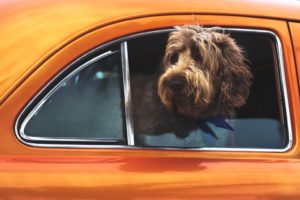
Approximately 48% of dogs experience canine motion sickness, so there’s an almost 50% chance that your pet might suffer while riding in the passenger seat. If your dog is younger, they are more susceptible to this affliction, so knowing how to treat the symptoms from puppyhood is essential. These tips can help your pooch to enjoy car rides rather than finding them a trial and an upset – for both of you.
Signs That Your Pet Might Be Carsick
Your pet cannot communicate with you in words, so you need to watch them closely to see if they are suffering any adverse effects during a car ride. Some of the most common signs that your dog may exhibit if they are suffering from car sickness include excessive yawning, drooling, restlessness, and in extreme cases, diarrhea. Some of these symptoms also overlap with canine anxiety, so it’s important that you look for a combination of these signs to identify their true root cause.
Choose the Right Vehicle
Often, the fast motion and being in a small, cramped space are what triggers car sickness in dogs. There are certain vehicles that will ease the motion burden that your pet suffers, such as a compact SUV. Compact SUVs combine all the aspects of a small vehicle with space and comfort for pets who might suffer from motion sickness. Despite their interior spaciousness, small SUVs are normally extremely light on gas and easy to drive too. These cars often have flat-cargo areas that offer more than enough space for your dog to relax and stretch out, even on long drives.
Make Driving A Familiar Activity
Motion sickness is often caused by an excess of stress and anxiety. One of the best things you can do to make your dog feel comfortable is to expose them to driving at a young age. When you do this, they learn that they don’t have to feel scared or anxious in a moving vehicle. Start by taking short trips initially and build them up over time.
Include Toys As A Distraction
Bringing along some of your pets’ favorite toys might make them feel far more at ease in the vehicle. Not only do their favorite toys feel familiar, but they can also distract them and make them less prone to stress. If they have something else to focus on, they may relax and forget about the drive completely.
Relieve Stress by Limiting Food Intake
Another tip that might reduce the effects of motion sickness is to decrease food intake for a couple of hours before hitting the road. You can plan their meals in a way that they have a relatively empty stomach while in the car. Instead of feeding them before setting out, rather pack in a meal for when you arrive at your destination. A slightly hungry dog is a far better option than one that’s suffering badly from car sickness with no respite in sight.








